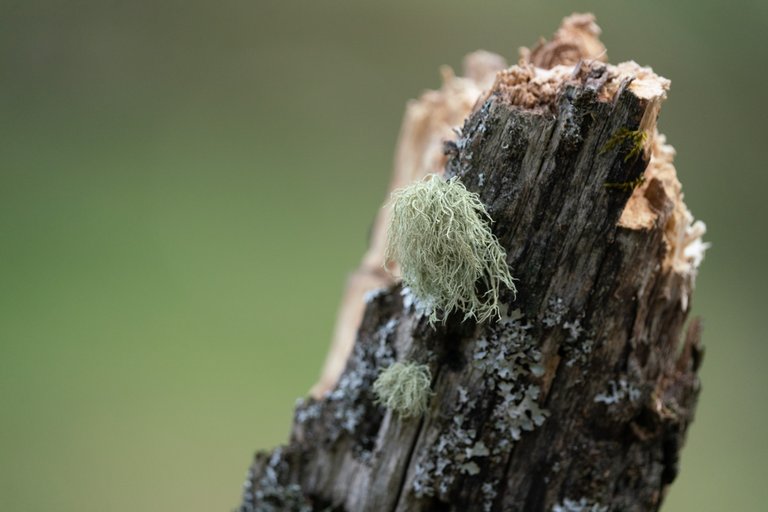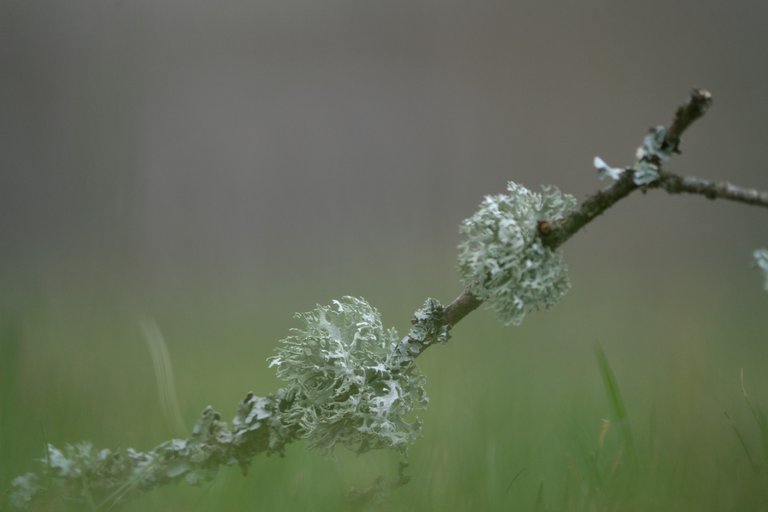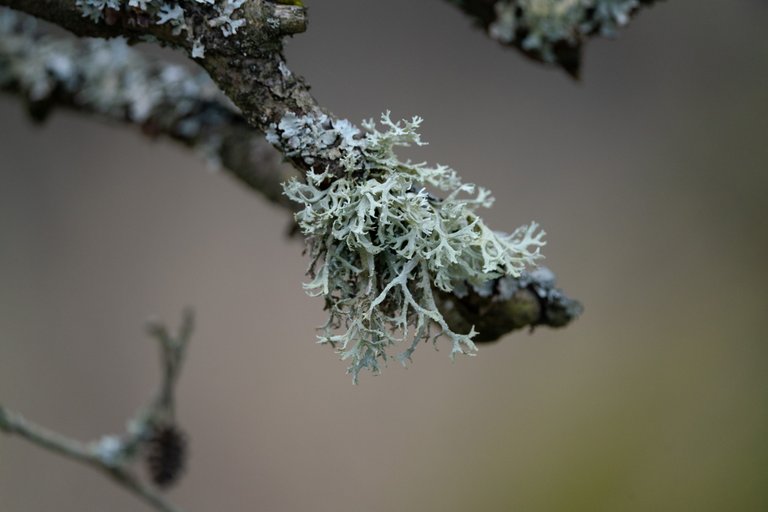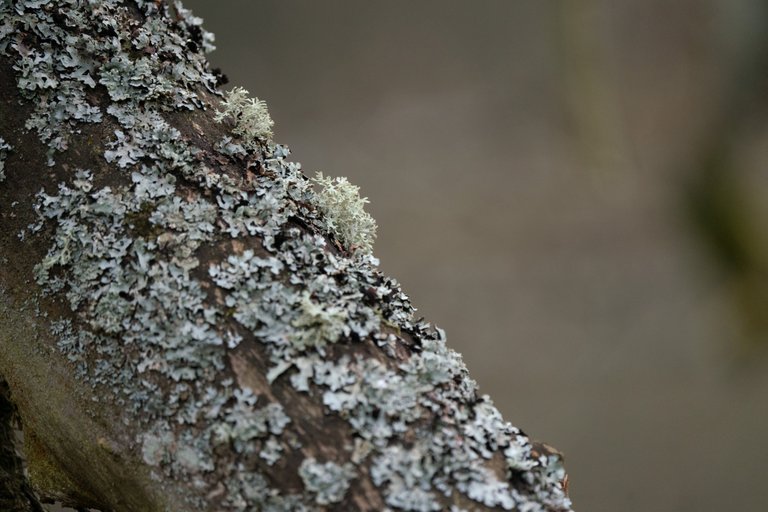Hello everybody!
Sometimes usual is a bit boring!
So I have some photos of weird formed Lichens!
Let’s get right into it:
About beard lichens (Usnea spp.)
Short explanation: Usnea spp. = several species of bearded lichens.
The life form "lichen" is formed by a symbiosis of fungus and one or more photosynthesizing partners, green algae or cyanobacteria ("blue-green algae"). It is only in this symbiosis that the characteristic lichen acids are formed, of which the medicinal usnic acid is the best known. This is the name of the genus Usnea, to which the beard lichens, also known as "tree beard" or "forest beard", belong.
Bearded lichens are bark-inhabiting, drooping, whitish, gray to green lichens of varying lengths. They grow extremely slowly as beard-like structures or like hanging small shrubs. Unlike crustose lichens, gelatinous lichens and leaf lichens, bearded lichens are shrub lichens. Lichens can dry out almost completely without damage and can tolerate enormous temperature differences in this state.
Bearded lichens occur worldwide, but are only found in areas with high air quality in sparse, near-natural forests with old-growth stands!
Important note: Almost every second species of this group is threatened and is therefore on Red Lists of Central European countries and - depending on the federal state - may be under nature protection. This can range from partially protected to specially protected! You can read more about this and where the nature protection status is listed in the WILDFIND article "Nature Protection - Lichens and Mosses".
Use
For centuries, bearded lichens have been collected in the Alpine region in winter not only for the costumes of wild men, but - to a much lesser extent - because of their ingredients (bitter substances, lichenin - mucilage and fiber, lichen acids) also for medicinal purposes, as a non-lightfast dye and as a low-energy emergency food (debitter, then cook or dry slimy and use as a flour substitute, which fills the stomach, but provides little energy).

-Beard Lichen on a branch
The Reindeer Lichen
APPEARANCE AND LOCATIONS:
The true reindeer lichen (Cladonia rangiferina) belongs to the soil lichens - as do other Cladonia species very similar to it, which are also commonly called "reindeer lichens", e.g. the "false reindeer lichen" or "speckled cup lichen" , bot. Cladonia rangiformis, the delicate, densely dome-shaped growing "reindeer lichen" or "star-shaped reindeer lichen", bot. Cladonia stellaris, which is used for dry arrangements, in model making and for decorative purposes, and the "Ebenästige Rentierflechte", Cladonia portentosa. They all grow, resting on the ground, shrubby with richly branched stems. The ones of the real reindeer lichen are hollow and the terminal branches point mostly in one direction. The thicker stemlets are 1 - 1.5 mm thick, typical for the species. The tips of the lichen, which grows up to about 10 cm high, continue to grow slowly but unceasingly, while the lower parts of the lichen die and rot.
It reproduces by means of spreading units that look like fallen branches. As a result, it can form cushions up to 1 m in diameter during its growth.
The color of reindeer lichen can vary slightly: Most often it is light whitish-gray, but its color can also turn into blue-gray and brown-gray. Often it shows brown-red tips.
In Central Europe, reindeer lichen is found only in small areas on slightly acid to acid soils, on raw humus blankets, in dwarf shrub heaths and sparse forests, on peat soils and mossy rocks, while in Northern Europe it forms the dominant ground cover over large areas.
EDIBILITY FOR HUMANS
Common reindeer lichen is edible to humans, but tastes very bitter. Debittering by boiling with repeated hot water changes is recommended. In times of need, it has saved many from starvation!
This lichen is not used medicinally, but it is often confused with the healing and edible Cetraria islandica, the Icelandic moss, also a lichen, even more so because they inhabit the same areas.
Together with Icelandic moss, reindeer lichen is sometimes used for alcohol production (aquavit).



Thanks for reading and see you soon…